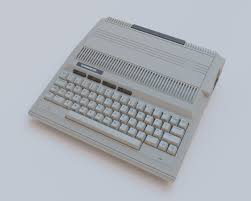
The Commodore 64: A Revolutionary Computer
The Commodore 64, also known as the C64, is one of the most iconic and best-selling home computers in history. Released by Commodore International in August 1982, the C64 quickly became a favorite among computer enthusiasts and gamers alike.
Featuring a MOS Technology 6510 microprocessor running at 1 MHz and 64 KB of RAM, the Commodore 64 was a powerhouse for its time. It also boasted impressive graphics and sound capabilities, making it a versatile machine for both work and play.
One of the key reasons for the C64’s success was its extensive software library. Thousands of games, applications, and utilities were available for the system, catering to a wide range of interests and needs. Popular titles like “The Bard’s Tale,” “Pitfall!,” and “Impossible Mission” helped solidify the C64’s reputation as a gaming powerhouse.
Another factor that contributed to the C64’s popularity was its affordability. Priced at $595 upon its release, the Commodore 64 offered impressive performance at a fraction of the cost of other computers on the market.
Despite its age, the Commodore 64 remains beloved by retro computing enthusiasts and collectors. Its impact on the computer industry is undeniable, with many considering it a pioneer in bringing computing power into homes around the world.
Even today, there are active communities dedicated to preserving and celebrating the legacy of the Commodore 64. Emulators allow modern users to experience classic C64 software on their computers or mobile devices, keeping this revolutionary computer alive in the digital age.
Whether you’re a longtime fan or new to retro computing, the Commodore 64 holds a special place in computer history as a groundbreaking machine that paved the way for future innovations in technology.
Uncovering the Legacy of the Commodore 64: Insights into Its Design, Value, Affordability, and Market Challenges
- Was the Commodore 64 just a keyboard?
- How much is a Commodore 64 worth today?
- How much is a C64 worth?
- Why was the Commodore 64 so cheap?
- Why did the Commodore 64 fail?
Was the Commodore 64 just a keyboard?
One frequently asked question about the Commodore 64 is whether it was just a keyboard. While the Commodore 64’s design prominently featured a built-in keyboard, it was much more than just a keyboard. The Commodore 64 was a complete home computer system with advanced hardware capabilities for its time, including a microprocessor, memory, graphics and sound chips, ports for peripherals, and the ability to run a wide range of software applications and games. Despite its compact form factor and integrated keyboard, the Commodore 64 offered powerful computing capabilities that made it a versatile and popular choice for users in the 1980s.
How much is a Commodore 64 worth today?
The value of a Commodore 64 can vary depending on several factors such as its condition, included accessories, and whether it is in working order. Generally, a fully functional Commodore 64 in good condition with all original components can fetch anywhere from $50 to $200 or more in the current market. However, rare editions or those accompanied by peripherals and software may command higher prices among collectors and enthusiasts. It’s always advisable to research recent sales and listings to get an accurate idea of the current market value of a Commodore 64.
How much is a C64 worth?
The value of a Commodore 64 can vary depending on several factors such as its condition, included accessories, and whether it is in working order. Generally speaking, a fully functional C64 in good condition with all its original components and peripherals can fetch anywhere from $50 to $200 or more in the current retro computing market. Rare editions, limited releases, or C64 systems with additional accessories may command higher prices among collectors and enthusiasts. It’s recommended to research recent sales and listings to get a more accurate idea of how much a specific Commodore 64 model is worth.
Why was the Commodore 64 so cheap?
The Commodore 64 was able to achieve its affordability due to a combination of factors. One key reason was Commodore International’s vertical integration strategy, which involved manufacturing many of the components in-house, reducing production costs. Additionally, the company’s economies of scale allowed for mass production of the C64, further driving down costs. Commodore also made strategic decisions in terms of design and functionality to keep manufacturing expenses low without compromising on performance. By optimizing production processes and leveraging its resources effectively, Commodore was able to offer the Commodore 64 at a competitive price point, making it accessible to a wide range of consumers and contributing to its immense popularity.
Why did the Commodore 64 fail?
The question of why the Commodore 64 “failed” is a complex one with various factors at play. Despite being a hugely popular and successful computer in terms of sales and user base, the decline of Commodore International as a company in the late 1980s and early 1990s ultimately led to the discontinuation of the Commodore 64. Internal management issues, increased competition from other computer manufacturers, changing consumer preferences, and the rapid advancement of technology all played a role in the eventual decline of the Commodore 64. However, it’s important to note that while Commodore International may have faced challenges that led to the end of production for the C64, its legacy and impact on computing history remain significant to this day.
